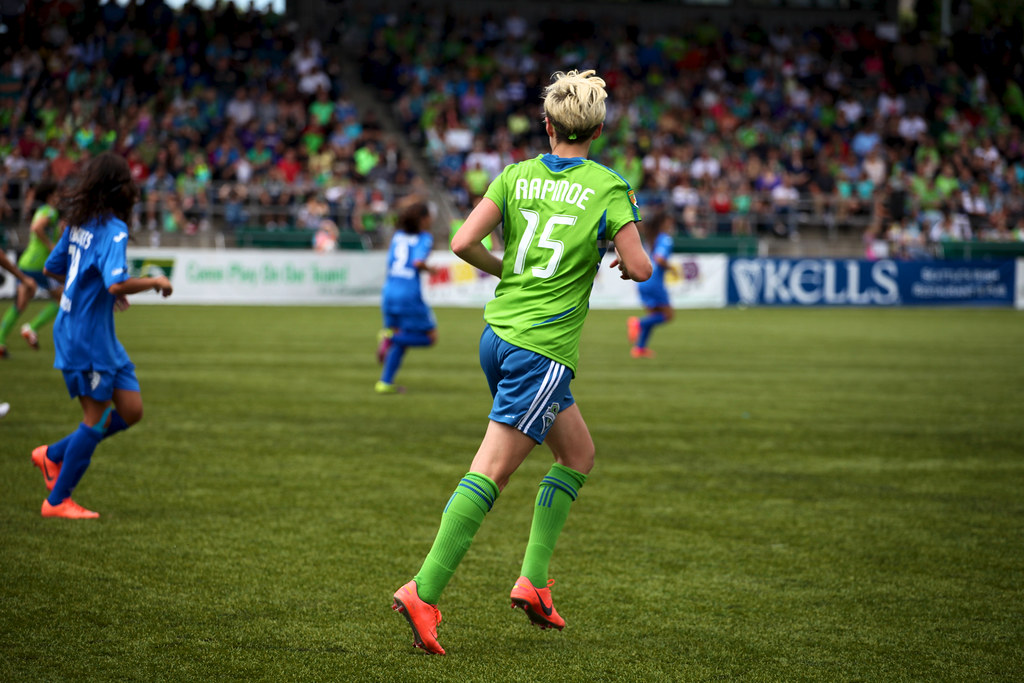
The purpose of this research was to dive deeper into the discrepancies in coverage amongst male and female athletes in olympic soccer. As seen in the current research, there was a vast amount of content covering different athletic events in regard to gendered imagery and language. Why I chose to more closely analyze professional soccer stemmed from the current issues seen in the women’s professional league in regard to the extensive pay difference between male and female athletes. About 10 years ago, my sister was a part of the women’s professional soccer league and experienced this pay gap first hand. I remembered the frustration and anger she felt surrounding this issue. This always stuck with me and it is another reason why I chose to focus on the olympic soccer events in relation to gender discrepancies.
My research question revolves around specifically gendered language in specifically print media coverage. This route I felt was lacking in the current literature. A lot of articles focused mainly on televised coverage of sports. The component of language and frequency of gendered language I felt would be stronger when analyzing print media.
My findings were incredibly interesting and quite shocking. I chose my sample to be print articles for men’s soccer at the 1996 and 2016 games and women’s soccer at the 1996 games. The reason I chose 1996 as a year to evaluate was because this was the first time women’s soccer had been included in the games. I knew this would provide me with ample content to compare for men’s and women’s coverage. The 1996 games was also a great year to focus on as it was taking place on home turf; The United States. I felt as though looking at the women’s team in its relation to nationality could also be interesting. Similarly, I chose to look at the men’s Brazilian Olympic team from the 2016 games as the coverage for the men’s team with home turf advantage could be interesting in comparison to when the women played at home back in 1996.
After engaging in rigorous content analysis of 50 articles discussing the 1996 women’s olympic soccer events and then men’s 1996 and 2016 soccer events, I found great differences in the language and subject focus of the articles. The process of content analysis starts with a general read through of all 50 articles and then consists of both qualitative and quantitative coding. Quantitative coding focuses mainly on finding frequencies in recurring words or phrases, whereas latent coding deals more with thematic oversight within all the different articles. The men’s articles had high frequencies in words like “triumph” and “victory”, whereas the women’s articles contained high frequencies in words such as “attendance”, “crowd”, and “fans”. Thematically, my findings were relatively consistent with findings seen in current literature, being that there is in fact heavy gender discrimination in media coverage of professional athletes. Due to the nature of my research being focused on gendered language, I found that my results were similar to that of studies where the primary focus was to see how print media was covering each gender during the games in relation to commentary of the athletes and their corresponding sport (Bishop 2018; Shugart 2003; Smith 2014; Jones, Murrell and Jackson 1999). These findings displayed heavily gendered language that in fact greatly affected how each athlete was portrayed and covered. Similarly, my results exhibited that the difference of language, verbiage, and phrases yields differences in how men’s and women’s soccer players were being covered at the olympic games.
The future of this research for me personally would consist of further analyzing gendered imagery and its impact on media coverage of men’s and women’s olympic soccer. The present literature has a unique but limited framework in which images in coverage are analyzed and I feel developing this perspective further could provide very interesting results. I also found that more popular press articles tackled the variations in imagery of men’s and women’s athletics but academic journals were lacking in this area. I also think that developing the current ideas about general athletics and imagery and focusing specifically on olympic soccer would make for great research in the future.